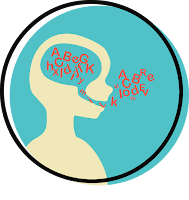Articulation and Phonological disorders may seem to be the same thing to the untrained observer. Both disorders involve errors in speech, such as substituting one letter sound for another or leaving a sound out entirely. They are considerably different, however, when you consider the root causes.
Articulation Disorder is a speech disorder. It has to do with the way sounds are formed by the tongue, lips, teeth and mouth.A child might not be able to form certain sounds because of physical reasons. Some examples of physical factors affecting speech are absence of teeth, cleft palate, enlarged adenoids and lack of muscle control. Many children have mild to moderate articulation problems, but they often resolve as the child grows and develops. In these cases, the child's speech can generally be understood, and the child would not necessarily need speech therapy. In cases where the child's speech is so distorted that they cannot be understood or when the problems do not improve on their own, speech therapy is needed (Heward et al., 2017).
Phonological Disorder is a language disorder. It involves problems with articulation, but they are not caused by the physical problems mentioned above. With a phonological disorder, the child has the ability to produce a sound, but is not consistent. The child may use a sound correctly in one instance but not another. For example, he may be able to say the word 'sad' correctly, but leave off the final 's' sound in plural words. Children with phonological disorders are likely to struggle with reading and writing. Speech therapy is necessary. (Heward et al., 2017)
The American Speech-Language-Hearing Association has a website dedicated to helping people know the signs of communication disorders. Check out their video below, and for more information, visit their website at identifythesigns.org.
The Center for Parent Information and Resources has the following to say about getting help for a child with a suspected speech disorder:
Because all communication disorders carry the potential to isolate individuals from their social and educational surroundings, it is essential to provide help and support as soon as a problem is identified. While many speech and language patterns can be called “baby talk” and are part of children’s normal development, they can become problems if they are not outgrown as expected (The Center for Parent Information and Resources, 2015)..
Evaluation by a licensed Speech Language Pathologist (SLP) is the best way to determine whether a child has an articulation or phonological disorder. According to Heward, Alber-Morgan and Konrad (2017, pp. 271-273), a thorough evaluation for a communication disorder should include examination of the following:
Parents of children who are not yet school-aged are able to obtain speech therapy services through the local district, if your child qualifies. (The Center for Parent Information and Resources, 2015.) If you have concerns about your child's speech at any age (birth - 21), contact your school district for information on getting an evaluation or ask your pediatrician for a referral. For more information, visit parentcenterhub.org/speechlanguage/.
Click here for complete APA references for this post.
- Physical exam and history. An SLP will gather information on the overall health and development of a child, and examine the formation of the mouth to see if there is a structural concern that may be affecting the child's speech.
- Articulation. The child's speech errors will be assessed.
- Hearing. Speech and language are based largely on what a child can hear and imitate.
- Phonological processes. Can the child tell the difference between sounds, remember sounds and produce them appropriately?
- Language Development and Vocabulary. A good way to asses the mastery of language is to determine the number of words a child knows and uses.
- Language Function. How is the child's language affected by different situations?
- Language Samples. An SLP might use an observation of your child in a natural setting or ask open-ended prompts like, "Tell me about your favorite TV show."
- Observation in natural settings. It's important to see how the child communicates in a natural setting, rather than just in a clinic, to get an accurate picture of the child's language abilities.
Parents of children who are not yet school-aged are able to obtain speech therapy services through the local district, if your child qualifies. (The Center for Parent Information and Resources, 2015.) If you have concerns about your child's speech at any age (birth - 21), contact your school district for information on getting an evaluation or ask your pediatrician for a referral. For more information, visit parentcenterhub.org/speechlanguage/.
Click here for complete APA references for this post.

Comments